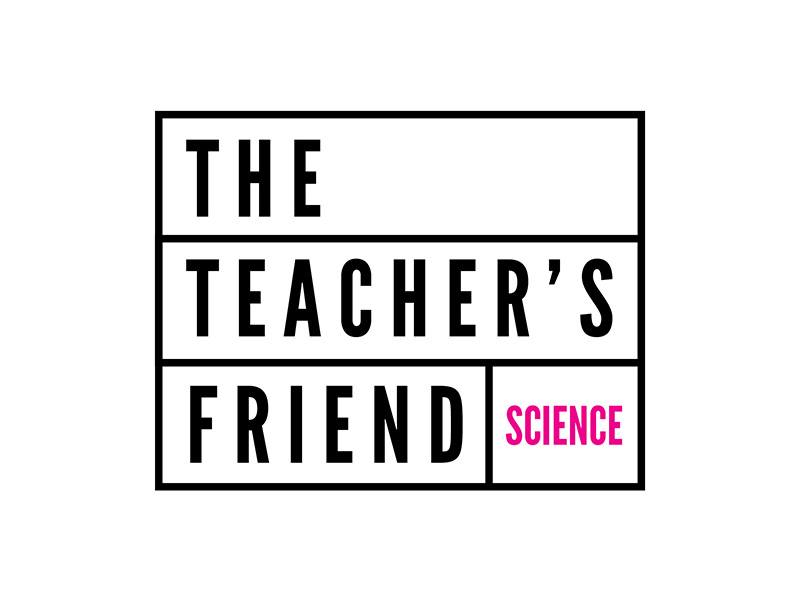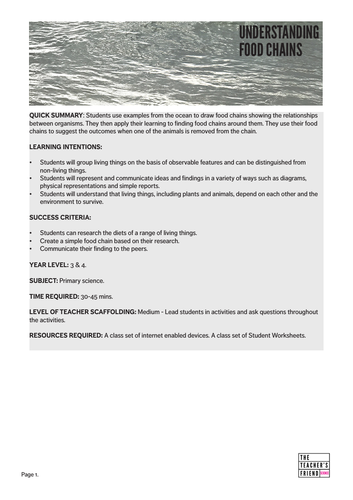

Students use examples from the ocean to draw food chains showing the relationships between organisms. They then apply their learning to finding food chains around them. They use their food chains to suggest the outcomes when one of the animals is removed from the chain.
They will group living things on the basis of observable features and can be distinguished from non-living things.
Students will represent and communicate ideas and findings in a variety of ways such as diagrams, physical representations and simple reports. They will understand that living things, including plants and animals, depend on each other and the environment to survive.
Students will be able to research the diets of a range of living things, create a simple food chain based on their research and communicate their finding to the peers.
Something went wrong, please try again later.
This is such a cute and creative way to teach about food chains! Loved the lesson set-up too - really detailed.
Science isn't my strong suit, so I really liked that this lesson had a range of pre-made food chains to choose from. Now that I've taught this lesson once, I'm thinking of using the same lesson structure again and letting students explore food chains in our local area!
Report this resourceto let us know if it violates our terms and conditions.
Our customer service team will review your report and will be in touch.